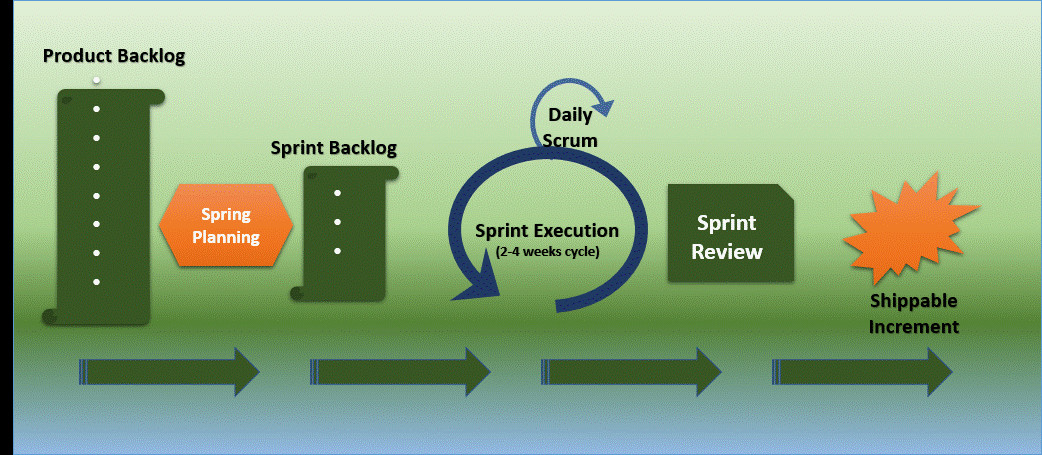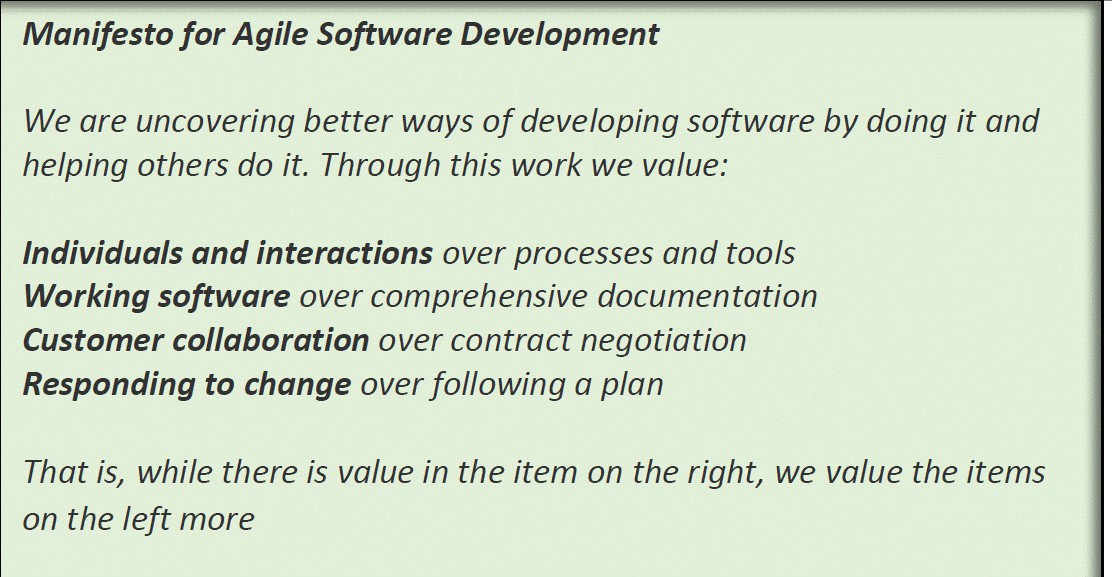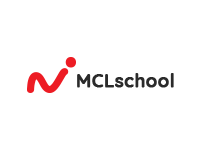
Agile team delivers innovative results through Scrum
1. Scrum
If you are like me that don’t understand Rugby, each time you glance at the match, either you see people running to catch a ball thrown at them or the two teams knocking their heads together in what looks like bull horn contest. One team lock their hands, head bowed, move to engage the other team. Each team now push hard against each other to overcome the barricade. This is repeated progressively throughout the game. And they call this formation Scrum in rugby and scrimmage in American football.

. Scrum in Agile
A borrowed term from Rugby, Scrum is an Agile project management framework that encourages teams to self organize and deliver functionality usually in two weeks. This is repeated incrementally until the project is done. Each of these two-week cycle is called sprints. So, you could have up to 10 sprints or less in a five months project. Each sprint gets you closer to finishing the project to the delight of the stakeholders.
Scrum is usually for teams of three to nine. A typical Scrum Team in Agile methodology is made up of the Product Owner, Development Team and the Scrum Master.
3. Sprint
A sprint is a short period of about two weeks in which the development team focuses on delivering specific set of work.
The beauty of Scrum framework is that at the end of each sprint, the team delivers useful product (or minimum viable product) to the client. The team then reviews the product delivered, together with the process of developing the product with the client. Client makes useful inputs and changes that will be used to reprioritize product backlog and improve the next sprint. In addition, things that worked well during the sprint are identified and publicised, while things that did not work are improved upon. The team use the Lessons learned from a finished sprint to improve on the next sprint .
This frequent assessment and adaptation of plans makes AGILE method very suitable in a changing environment and gives customer opportunity to be part of the delivery process and ensures end product meets expectation.
4. Daily Scrum meeting
The scrum team hold Daily Scrum meeting which should not last more than 15mins to answer three questions:
- What did I complete yesterday in furtherance of our sprint goal?
- What do I plan to complete today in furtherance of our sprint goal?
- Do I see any impediment that could prevent me or the team from meeting our sprint goal?
Any Impediment identified during the daily scrum is noted by the Scrum Master. He displays the impediment on the team scrum board. The team then agrees on who to resolve it. Detailed discussions are not done during daily scrum meeting.
For ease of planning and best result daily scrum meeting is usually held same time, same place with each member standing.
5. Scrum Master
Scrum master is not the typical project manager. He is more like the coach who may not have the much authority over team members, other than to facilitate scrum, remove any impediments to the teams success, motivate the team to follow defined ground rules or Scrum Framework, act as a buffer between the team and any distracting influences. He is also referred to more as a facilitator or servant-leader. He doesn’t have people responsibility. His roles also include helping product owner maintain a prioritized product backlog and educate other stakeholders on the principles of Scrum to aid quality delivery.
6. The Scrum Framework
The following diagram shows the Scrum framework. The framework is fixed but the content keeps changing until the project is completed. At the end of each sprint a minimum viable product is produced, reviewed, adjustments are made on the direction as appropriate. This is repeated, until final product is delivered.


7. Scrum Tools
JIRA is one of the most commonly used tool for managing Scrum. It provides Issue tracking, bug tracking and project management functions. You can plan, track and manage Agile software development projects from JIRA. It supports both scrum, Kanban and other similar flavours you may want.
8. The Agile Team
Scrum framework provides an approach for Agile team to implement innovative solution. This fulfills the basic requirements of Agile methodology of ensuring that requirements, design, prototypes are constantly examined on a recurring and incremental basis.
When projects are incrementally reviewed, there is an opportunity to adjust the project and move in another direction to accommodate new ideas and changing circumstances. Hence the saying that Agile project is change driven as compared to the traditional Waterfall method where the team has just one chance at the beginning to get their planning done.
Agile methodology allows organizations to build great products at very reduced cost, adapt to changes easily and get products to the market faster.
Agile methodology is relatively new project management approach originally developed for software industry but is now being used in other industries. Agile manifesto coined in 2001 states:

Agile is now widely embraced as innovative project management framework that responds very well to changing environment, stimulates creativity, drives innovation and keeps customer at the driving seat throughout the project. Who doesn’t want to be Agile anyway!! Most organizations however tailor Agile/Scrum to suit their organization’s requirements.
